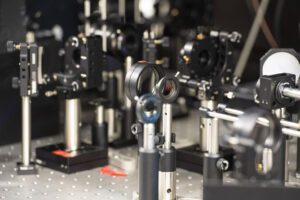
To help investigate dangerous regions or monitor the environment, scientists have been attempting to create cyborg insects, partially insects, and primarily machines. The ability to control cyborg insects remotely for extended periods is necessary for their use to be viable, though. However, their power outputs are limited to less than one mW, which is considerably lower than those required for wireless locomotion control. The energy harvesting device’s area and load substantially impair tiny robots’ mobility.
An international team led by researchers at the RIKEN Cluster for Pioneering Research (CPR) has engineered a system for creating remote-controlled cyborg cockroaches. The system consists of a tiny wireless control module powered by a rechargeable battery attached to a solar cell. The insects may move thanks to flexible materials and ultrathin electronics, despite the mechanical gadgets.
The scientists conducted their research using 6 cm long Madagascar cockroaches. The wireless leg-control module and lithium polymer battery were mounted to the insect’s thorax utilizing a custom-made backpack fashioned after a model cockroach’s body. The backpack was 3D printed with an elastic polymer and conformed perfectly to the curved surface of the cockroach. This allowed the rigid electronic device to be stably mounted on the thorax for more than a month.
Kenjiro Fukuda, RIKEN CPR, said, “The ultrathin 0.004 mm thick organic solar cell module was mounted on the dorsal side of the abdomen. The body-mounted ultrathin organic solar cell module achieves a power output of 17.2 mW, more than 50 times larger than the current state-of-the-art energy harvesting devices on living insects.”
Movement freedom was made possible thanks to the organic solar cell‘s thin and flexible construction and the way it was attached to the insect. The scientists found that the abdomen changes shape and parts of the exoskeleton overlap after closely observing typical cockroach movements.
To do this, they interspersed adhesive and non-adhesive regions onto the films, allowing them to flex while remaining attached. The cockroaches took twice as long to run the same distance when thinner solar cell films were tested, and they had trouble standing up after falling on their backs.
Once these components were integrated into the cockroaches and wires that stimulate the leg segments, the new cyborgs were tested. The battery was charged with pseudo-sunlight for 30 minutes, and animals were made to turn left and right using the wireless remote control.
Fukuda said, “Considering the deformation of the thorax and abdomen during basic locomotion, a hybrid electronic system of rigid and flexible elements in the thorax and ultrasoft devices in the abdomen appears to be an effective design for cyborg cockroaches. Moreover, since abdominal deformation is not unique to cockroaches, our strategy can be adapted to other insects like beetles or flying insects like cicadas in the future.”
Journal Reference:
- Kakei, Y., Katayama, S., Lee, S. et al. Integration of body-mounted ultrasoft organic solar cell on cyborg insects with intact mobility. npj Flex Electron 6, 78 (2022). DOI: 10.1038/s41528-022-00207-2













